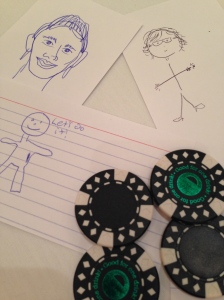Last week featured a series of posts drawing on themes of creativity, curiosity, meaning, community, and empathy from the Delight Conference 2014 in Portland, as well as Design Week Portland. In conclusion, some random observations follow.
We have moved through agrarian, commodity, and service economies to wrestle now with the experience economy, where customers are demanding personalized contribution and authentic engagement. This is an era of global, cross-cultural interactions, in which consumers demand collaborative content creation all within an environment where opinion and information is developed in great volume and shared with greater velocity.
Commentators such as Thomas Davenport and John Beck argue that the scarcest resource is attention, and that unless companies learn to effectively capture, manage, and keep it, both internally and out in the marketplace, they’ll fall behind. The famous industrial designer, Yves Behar, declared this an era of participatory branding. Tim Brown, CEO of innovation and design firm IDEO, has argued that our approach to design must be reconfigured for the future, from “… a passive relationship between producer and consumer, to the active engagement of everyone, in experiences that are meaningful, productive, and profitable.”
 In this context, what I learned, who I met and my subsequent reflections about the Delight Conference have been valuable. Also, however, I have recognized that my overall experience was informed not just by the conference content, but the many small, seemingly insignificant moments experienced at the conference and throughout Design Week. Indeed, my delight (if you’ll excuse the pun) was made all the richer for the following occasions:
In this context, what I learned, who I met and my subsequent reflections about the Delight Conference have been valuable. Also, however, I have recognized that my overall experience was informed not just by the conference content, but the many small, seemingly insignificant moments experienced at the conference and throughout Design Week. Indeed, my delight (if you’ll excuse the pun) was made all the richer for the following occasions:
– Receiving some Kimpton Karma and staying in a spacious corner hotel room
– Without being asked, someone taking water to the Delight stage for a speaker with a dry throat
– The excellent morning coffee at Public Domain
– Forgetting to pack my toothbrush but getting a complimentary one from the hotel
– Being awarded 4 chips for my shoes (an exercise where the group each had a chip and handed it to someone they thought had the “best shoes”). The winner had over 20 chips, so I was never ever going to win, but those 4 chips made my day
– Several people telling me they liked my glasses
– Being told in the Madewell store that my outfit looked sharp
– Running to return a left-behind scarf, and being given an enthusiastic thumbs up from my peers
– Being walked to a conference workshop venue whose location I did not know
This is not a list of occurrences that would be labored over and planned by user experience consultants or designers as part of a robust strategy of engagement. Yet in these moments, my recollection is that the experience of them made me feel good. They are such simple examples, yet illustrate how the prosaic can be powerful, and how we can over-complicate our consulting and design efforts. It is a reminder of Susan Szenasy and Genevieve Bell’s comments that we are human, and the experiences that surround us must speak to our common humanity.
Now the conference is over, I continue to embrace what I learned and figure that in to my strategic thinking. How are you taking what you learned (at that conference or others) and making that come to life in your activities?

Of course you would get chips for the best shoes!! However, your socks are the BEST!